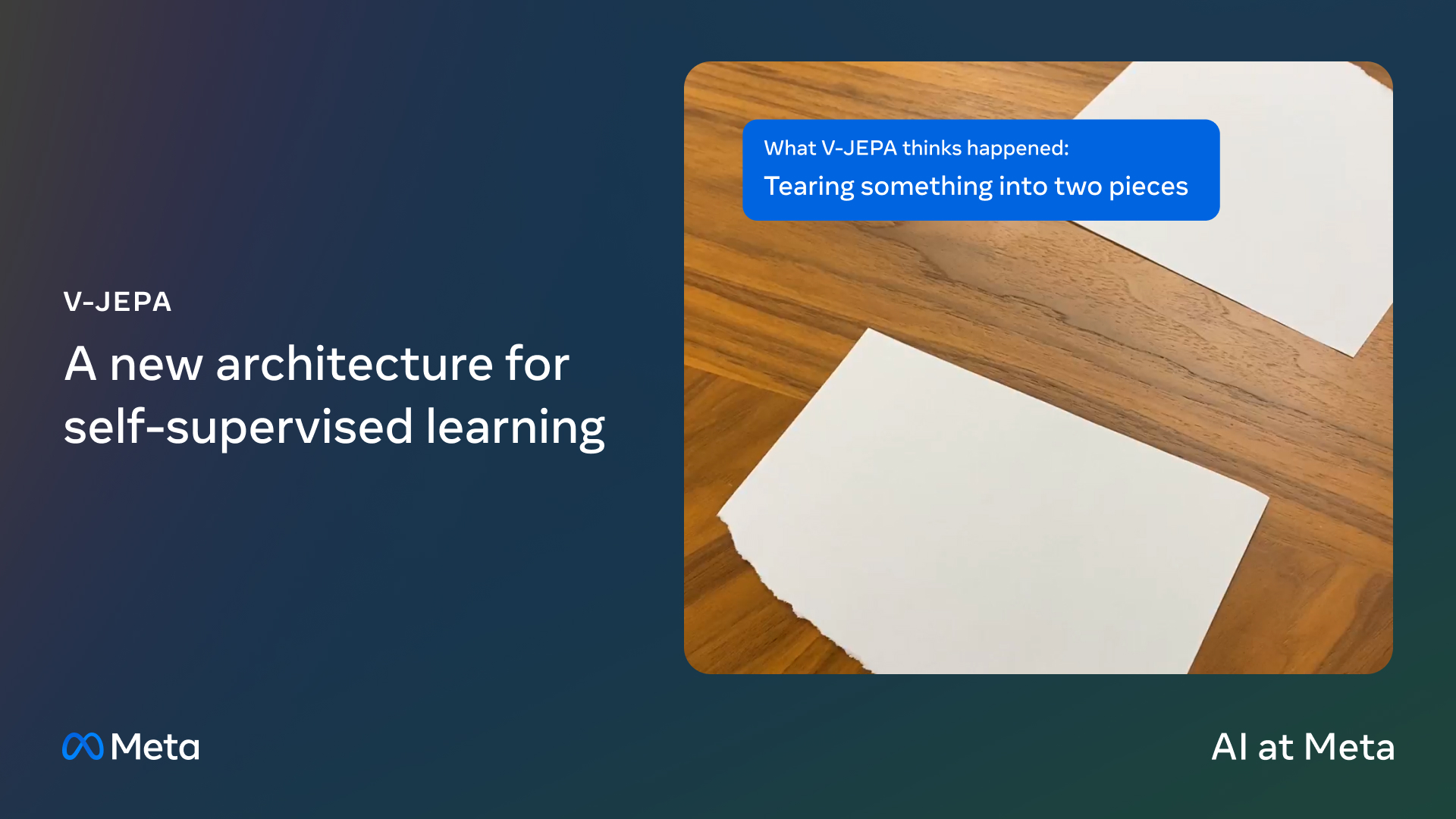Harnessing AI's Potential with Meta's V-JEPA: A Guide to Video-Based Learning
The digital age has been marked by significant advancements in artificial intelligence, and Meta AI has recently introduced a groundbreaking approach to machine learning through V-JEPA. This new model, V-JEPA, which stands for Video Joint Embedding Predictive Architecture, is revolutionizing the way AI interprets and learns from video content. Let's delve into the intricacies of V-JEPA, how it integrates with Meta AI, and the transformative impact it could have across multiple sectors.

Understanding V-JEPA and Its Mechanisms
V-JEPA is an AI system designed to learn autonomously from YouTube videos. By combining meta-learning with self-supervised learning techniques, V-JEPA can glean insights from the plethora of videos available on the platform. The system comprises two primary components:
Video Encoder: This element processes the video, transforming it into a high-dimensional vector encapsulating the video's content and context.
Meta-Learner: This component utilizes the video encoder's output to learn and adapt to new tasks and domains seamlessly.
Working in Tandem with Meta AI
Meta AI employs the aforementioned techniques—meta-learning and self-supervised learning—to educate V-JEPA. Meta-learning, also known as "learning how to learn," uses past experiences to acclimate promptly to novel scenarios. Self-supervised learning, on the other hand, self-generates labels from within the data based on its inherent structure and patterns. By fusing these methodologies, Meta AI leverages YouTube's extensive data to inculcate new capabilities in V-JEPA.
Practical Applications and Far-Reaching Implications
V-JEPA's capability to assimilate knowledge from YouTube's vast resource pool is not just a milestone in AI research, but also a harbinger of socio-economic evolution. The system opens doors to a myriad of applications, such as:
Video Summarization: Creating succinct overviews of lengthy video content.
Video Captioning: Generating descriptive subtitles for videos.
Video Question Answering: Providing answers to queries related to video content.
Video Recommendation and Search: Enhancing video discoverability according to user preferences.
Through these applications, V-JEPA holds the potential to redefine learning, entertainment, healthcare, and societal welfare.
Advantages and Benefits of V-JEPA
The innovative use of meta-learning and self-supervised learning enables V-JEPA to digest and interpret complex, dynamic scenarios that demand multi-faceted understanding. This ability leads to:
Unearthing valuable patterns from video content.
Assisting educators in employing videos for teaching.
Aiding researchers in analyzing and synthesizing video data.
Conclusion: Embracing AI's Evolutionary Leap
Meta AI's development of V-JEPA is a testament to the relentless pursuit of more intelligent and adaptable AI systems. By integrating meta-learning and self-supervised learning, V-JEPA not only extracts valuable information from video content but also remains agile in the face of new challenges. This technology is paving the way for an AI-driven future where the rich data reservoir of platforms like YouTube can be harnessed to its full potential.
Commonly Asked Questions about V-JEPA
Q: Can V-JEPA contribute to personalized learning?
A: Certainly! V-JEPA's ability to analyze and learn from video content makes it an excellent tool for creating personalized educational content based on individual learning styles and needs.
Q: How does V-JEPA aid video content creators?
A: By understanding video content at a granular level, V-JEPA can suggest improvements, generate descriptive tags, and optimize video content for better audience engagement.
Q: Can V-JEPA be used in professional training and development?
A: Yes, V-JEPA's capabilities make it ideal for developing training modules that require understanding complex procedures or concepts through video demonstrations.
Q: Is there potential for V-JEPA in enhancing search engine functionalities?
A: V-JEPA can definitely improve search engines by providing more accurate video search results and recommendations, thus improving user experience.
Q: Will V-JEPA's technology be accessible to small businesses and startups?
A: As the technology matures and becomes more widespread, it's likely that V-JEPA's functionalities will become accessible to a broader range of users, including small businesses and startups.




